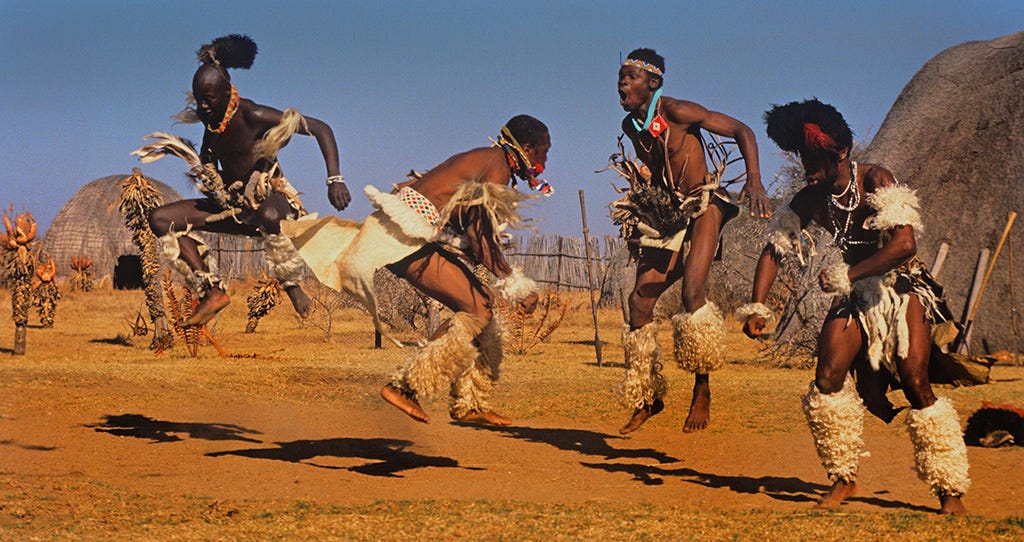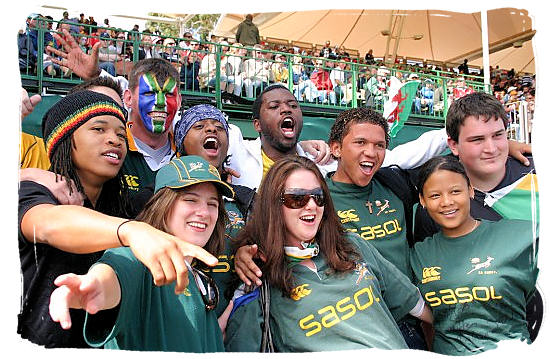The smart Trick of South African Culture Today That Nobody is Discussing
The smart Trick of South African Culture Today That Nobody is Discussing
Blog Article
Our South African Culture Today Diaries
Table of ContentsSouth African Culture Today for BeginnersHow South African Culture Today can Save You Time, Stress, and Money.Everything about South African Culture TodayThe Only Guide to South African Culture TodayThe Main Principles Of South African Culture Today Getting The South African Culture Today To Work
This follows with vocal singing and drum beating. The groom and bride after that consult with the elders and speak about the importance of their union. A matter of relevance in Zambian villages is the passing away of liked ones. All members of the village placed cash, effort and time with each other for the funeral of the deceased.During the grieving duration; guys remain outside your house and the women stay inside your home of the deceased. After discussing the dead, the village walks to the place of burial to state their last farewells. Songs and dancing is a really important aspect of the Zambian culture. The various tribal units have their own dancing types; nonetheless, makishi is usual among all people.
South African Culture Today - An Overview
When it comes to music, drums are used the most, with a range of drumming ceremonies. In Zambia, majority of the individuals are Christian; Protestant and Roman Catholic. There are little teams of Muslims and Hindus, with the remainder complying with neighborhood native tribal ideas.

South African heritage and culture is greatly diverse, and includes various groups of people who each have their own customs and ideas. Having such a variety of individuals and societies is what makes South Africa so one-of-a-kind. In the true sense of the expression, we are a rainbow nation.
Making it the 7th on the checklist of nations with the most Portuguese people in it outside of Portugal. Portuguese is not only a society, yet it is additionally a language and a race. Portuguese individuals stem from the nation of Portugal in Europe, nonetheless, due to Portugal (like several various other countries in Europe) discovering the world and dominating other nations during the 15th 20th centuries, South Africa has what we call Portuguese South African's living in it.
How South African Culture Today can Save You Time, Stress, and Money.
Among the prominent features of the topography is a plateau that covers virtually two thirds of the center of the nation. The plateau facility rises towards the southeast, where it culminates in the Drakensberg variety, component of a cliff that divides the plateau from the coastal locations. The Drakensburg includes Sparkling wine Castle, the highest possible peak in the nation.
The region north of the Witwatersrand, called the bushveld, inclines downward from east to west toward the Limpopo River, which creates the international boundary. The western section of the plateau, the middleveld, additionally descends in the direction of the west and differs in elevation in between the highveld and bushveld. Between the Drakensburg and the eastern and southerly coastline, the land comes down to the sea.
Nearer the coast there is a low-lying level called the eastern lowveld. Southwest of the plateau the country comes to be progressively much more dry, paving the way to the hostile desert of the Great Karroo, verged on the east by the lower, better sprinkled plateau of the Little Karroo. Separating the completely dry southern inside from the sandy coastal of the southern coast and West Cape is one more array, the Langeberg.
Get This Report about South African Culture Today
The country's racially, ethnically, and politically split background has actually produced nationwide and subnational signs that still operate as icons of the nation, and others symbols that are accepted just by certain teams. The monoliths to white settler occupation and political supremacy, such as the Afrikaner Voortrekker ("pioneer") navigate to this website Monolith in Pretoria and the Rhodes Monument recognizing the British colonial realm home builder and Cape prime priest Cecil Rhodes, continue to be sectarian symbols.
The first modern occupants were the San ("bushman") hunter-gatherers and the Khoi ("Hottentot") individuals, that herded animals (South African culture today). The San might have existed for thousands of years and left evidence of their existence in thousands of ancient cave paintings ("rock art"). Bantu-speaking clans that were the ancestors of the Nguni (today's amaZulu, amaXhosa, amaSwazi, and vaTsonga peoples) and Tswana-Sotho language groups (today's Batswana and Southern and Northern Basotho) moved below eastern Africa as very early as the fifteenth century

Both former republics of the Orange Free State and Transvaal (South African Republic) were established by Afrikaner settlers that beat and dispossessed the Basotho and Batswana. Lesotho would have been forcibly incorporated into the Orange Free State without the expansion of British protection in 1869. The utmost marriage of the country arised from the South African Battle (18991902) between the British and the two Afrikaner republics, which lowered the country to ruin at the start of the twentieth century.
Afrikaners historically considered themselves the only real South Africans and, while granting full click to read citizenship to all locals of European descent, refuted that standing to people of color up until the autonomous change of 1994. British South Africans retain a sense of social and social link to Great Britain without compromising their identification as South Africans.
South African Culture Today Can Be Fun For Everyone
The variety and fragmentation within ethnic groupings and the balance of stress in between those groups throughout the twentieth century prevented interethnic civil problem. While intergroup tensions over sources, entitlements, and political prominence stay, those conflicts are as most likely to match Zulu against Zulu as Zulu against Xhosa or African versus Afrikaner.
From colonial India, British merchants and managers brought the rounded steel decorative roofing systems and slender lace work columns that still epitomize the terraces of homes in the areas and cities throughout the nation. Holy places contribute an essential building element even in the tiniest towns. Along with the rising steeples and traditional stonework of Afrikaans Dutch Reformed churches, Anglican churches, synagogues, mosques, and Hindu shrines give range to the religious building scene.

Slaughtering and the developing of conventional grain beer are essential in protecting the participation and a good reputation of the ancestors that are considered the guardians of great lot of money, prosperity, and well-being. Indian neighborhoods maintain their indigenous culinary practices and use them on Islamic and Hindu routine and ritualistic celebrations. Afrikaners and Coloured individuals collect at weekend breaks and special occasions at multifamily barbeques called braais, where area bonds are reinforced.
Due to the fact that this was the primary economic venture of both black Africans and white homesteaders, dispute between those groups fixated the possession of grazing land and animals. In 1867, the largest diamond deposits in the globe about his were found at Kimberley in the west main location. The riches from those areas helped fund the exploitation of the greatest gold reef in the world, which was uncovered on the Witwatersrand in 1886.
The Ultimate Guide To South African Culture Today
This resulted in misunderstandings and purposeful misrepresentation in the dealings of white inhabitants and federal government authorities with African chiefs during the colonial period (South African culture today). In the facility of African gets, some aspects of common and chiefly "tribal count on" land tenure were maintained, and also in white country areas, forms of communal period were still exercised in locations with African areas
After the democratic improvement of 1994, programs for land restitution, redistribution, and reform were instituted, but development has been sluggish. The white minority still regulates eighty percent of the land. In the wake of agricultural land invasions in Zimbabwe, the Division of Land Affairs has pledged to speed land redistribution.
Report this page